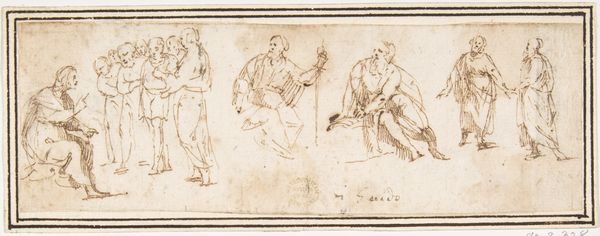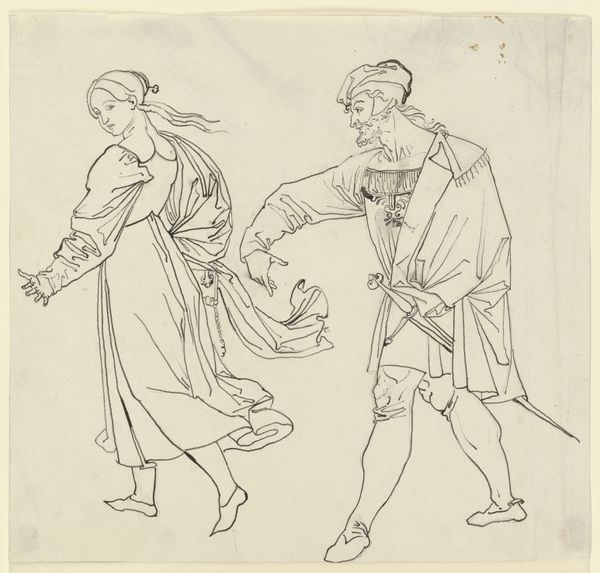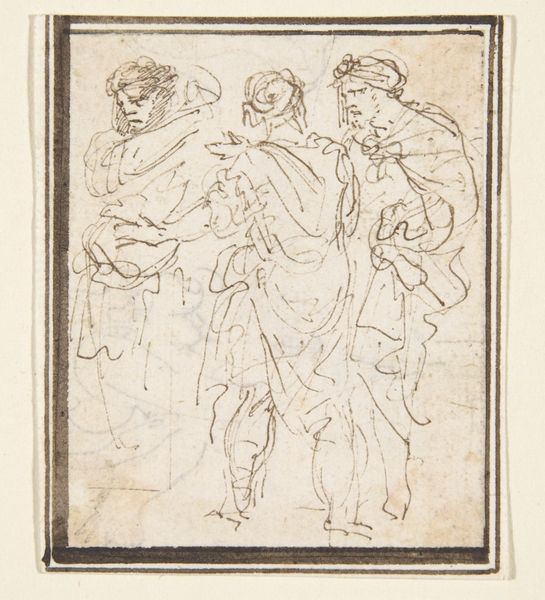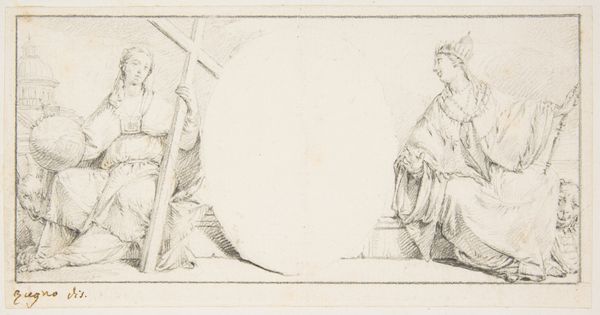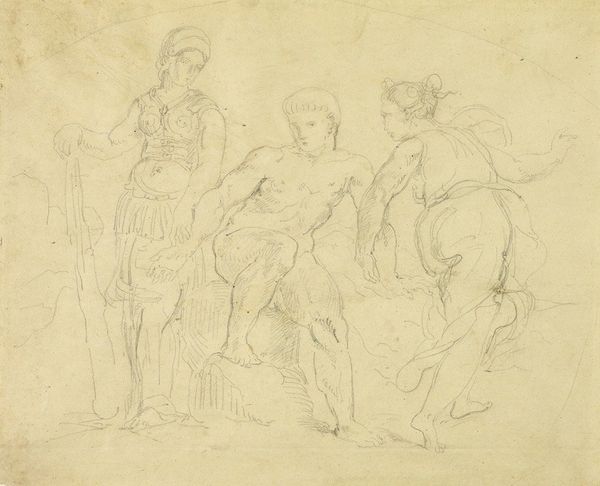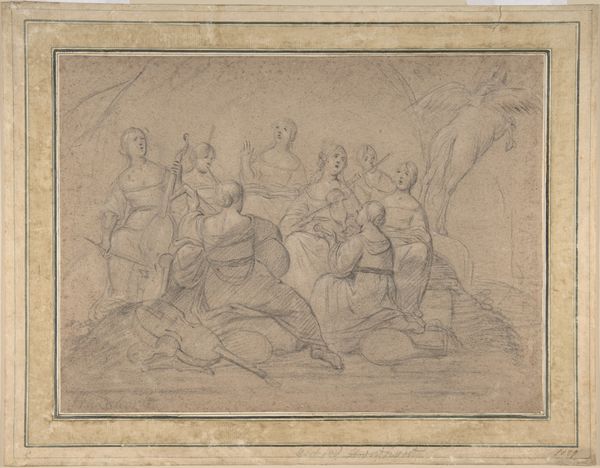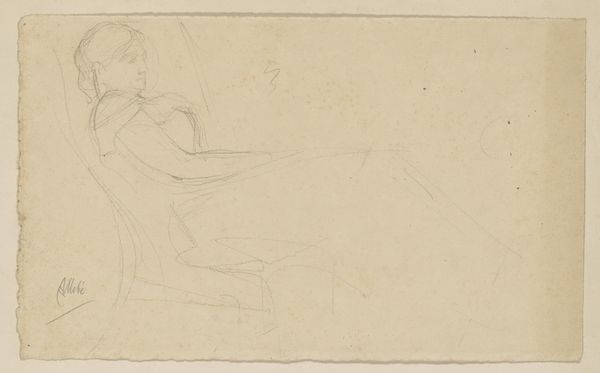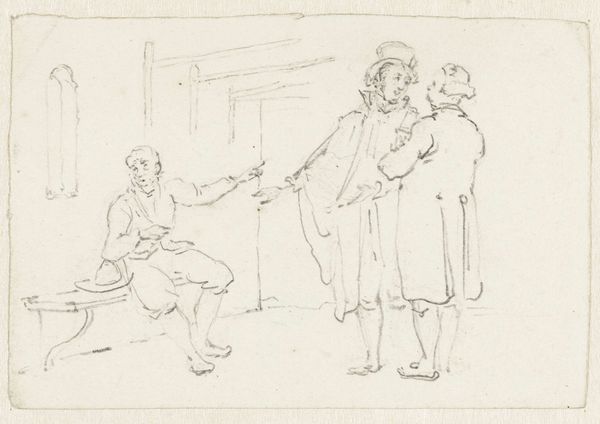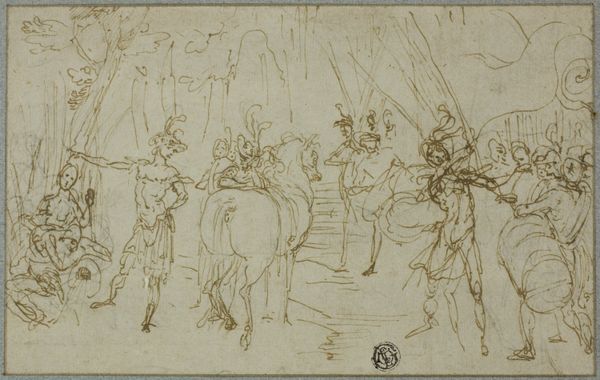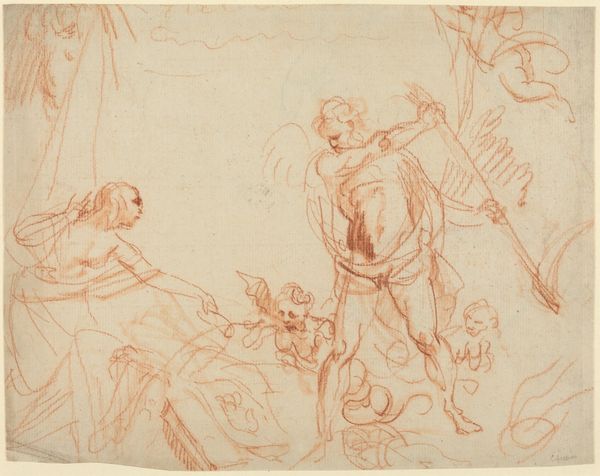
Studienblatt_ Römischer Lictor und Krieger mit Haupt auf Schild
0:00
0:00
drawing
#
drawing
#
figuration
#
ancient-mediterranean
#
history-painting
#
academic-art
Copyright: Public Domain
Editor: So this drawing, "Studienblatt: Römischer Lictor und Krieger mit Haupt auf Schild," attributed to Friedrich Moosbrugger, currently held at the Städel Museum, seems like a study of figures in an ancient Roman setting. The starkness of the pencil drawing, combined with the unsettling image of a severed head, gives it an almost clinical feel. What strikes you when you look at it? Curator: The composition immediately suggests a structural dichotomy. Observe the stark contrast between the standing Lictor, rendered with relatively simple lines, and the kneeling warrior, whose form is complicated by the shield and the grisly object it bears. The artist has clearly dedicated more energy to rendering the texture and detail in the latter figure, a deliberate choice that serves to disrupt the visual balance. Editor: So you see the contrast in their forms as being a key part of its meaning? Is the artist perhaps using visual cues to signify power or victory, or some other dynamic between the figures? Curator: Precisely. The artist's control over line and form invites questions about how we ascribe value within a pictorial space. Consider how the light catches the warrior's helmet, subtly directing the viewer's eye, almost like a stage direction. It begs the question: what statement is being made about this scene through this concentration of detail, as opposed to the simpler figure of the Lictor? Are we meant to understand the weight, both literal and figurative, borne by the warrior? Editor: That's a compelling observation. It shifts my perspective. Originally I saw the image as mostly focused on classical history, but perhaps Moosbrugger wanted viewers to analyze how and where we look in the picture plane. Thank you! Curator: Indeed. Focusing on such visual components allows for a deeper comprehension of not only the depicted scene but also the artistry embedded in its execution.
Comments
No comments
Be the first to comment and join the conversation on the ultimate creative platform.

